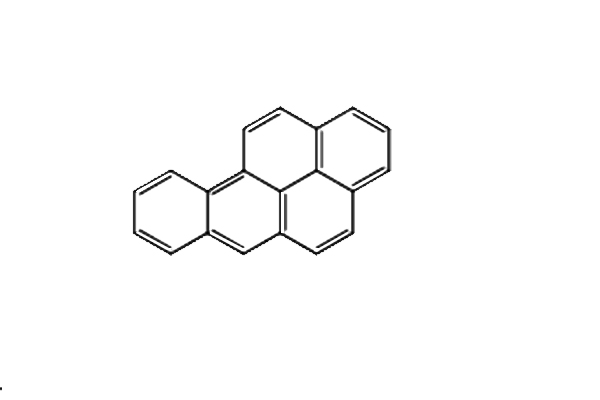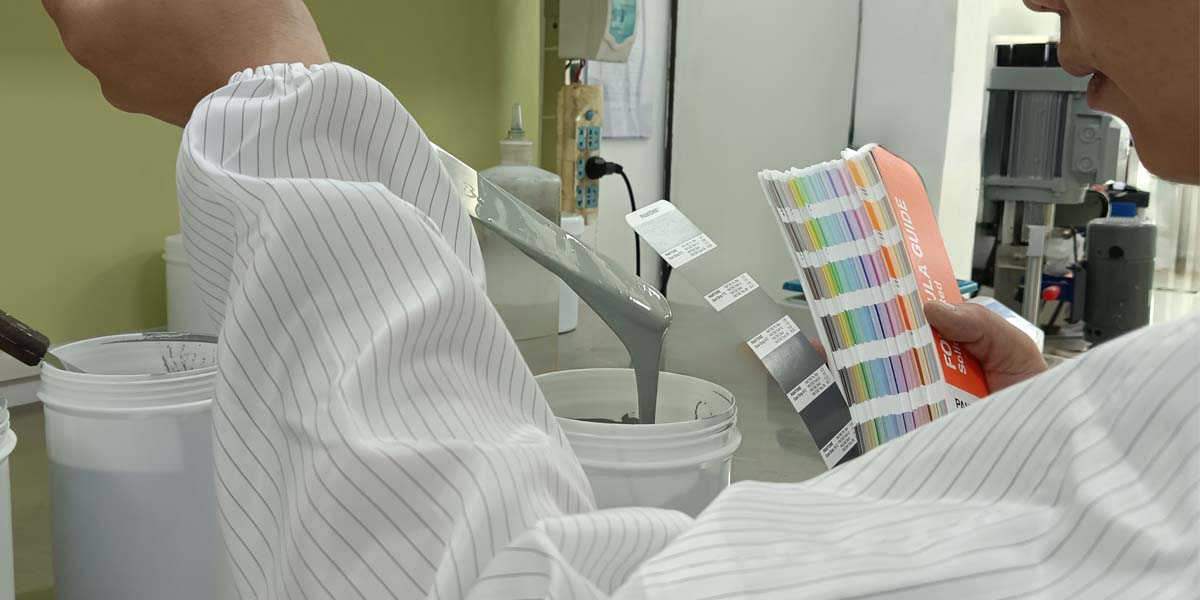Cracking the PAHs Puzzle: A Top Challenge for Ink Manufacturers
[Abstract] Polycyclic Aromatic Hydrocarbons (PAHs) are potent carcinogens that pose a headache for ink manufacturers due to their ease of exceeding environmental standards and potential for severe harm to both the environment and human health. Long-term exposure or ingestion of substances containing PAHs increases the risk of cancer, affects reproduction and development. In order to solve this problem, Tefisen has developed the TS600-300 series of inks that comply with PAHs Category 1 environmental standards.
Ink manufacturers face significant challenges with the PAHs environmental standard, as it is easy to exceed. Even if the ink itself complies, there is a risk of contamination during any stage of the printing process, such as from ink blades or ink cups. Exaggerating slightly, PAHs levels might even exceed standards due to wind. Some ink companies have gone so far as to refuse orders from clients with such requirements. In recent years, larger clients have demanded that ink manufacturers sign documents complying with various environmental standards, with harsh penalties for any exceedances.
So, what exactly are PAHs that make ink manufacturers hesitant to accept business?
Polycyclic Aromatic Hydrocarbons (PAHs) are aromatic hydrocarbons containing two or more benzene rings. They can be broadly classified into non-fused and fused types. PAHs mainly originate from natural and anthropogenic sources and are among the earliest recognized carcinogens. Over 100 types of PAHs have been discovered, with more than 30 confirmed as carcinogenic, among which Benzo[a] pyrene (BaP) is the most harmful and a potent carcinogen.

I. Hazards of PAHs:
Carcinogenicity: PAHs are proven carcinogens that increase the risk of cancer with long-term exposure or ingestion. They can damage DNA, cause gene mutations, and potentially lead to cellular carcinogenesis.
Endocrine Disruption: As environmental hormones, PAHs can interfere with the human endocrine system, affecting normal physiological functions, which may lead to reproductive issues, developmental abnormalities, and other health problems.
Skin Problems: Prolonged exposure to PAHs may cause skin inflammation, rashes, and other skin issues.
Respiratory Problems: PAHs particles in the air can be inhaled into the lungs, causing respiratory issues such as difficulty breathing, cough, and asthma.
Neurological Damage: PAHs may impair the nervous system, affecting cognitive function, memory, and attention.
Genetic Toxicity: PAHs have genetic toxicity, affecting the stability and integrity of genetic material, potentially leading to changes in genetic information and the emergence of genetic diseases.
PAHs are difficult to degrade in the natural environment and can persist in soil, water, and air, contaminating ecosystems. They can also pass through the food chain, affecting the health and survival of organisms.
II. Substances Potentially Containing PAHs:
Charcoal, crude oil, tar, wood tar – naturally occurring
Pharmaceuticals, dyes, plastics, rubber, pesticides – anthropogenic
Lubricants, mold release agents, capacitor electrolytes, mineral oils, asphalt – anthropogenic
Insecticides, fungicides, mosquito coils, tobacco smoke, gasoline inhibitors – anthropogenic
Others
III. Regulatory Standards:
German Voluntary GS Certification
REACH Regulation
IV. German GS Requirements for PAHs Standards:
The EU standards primarily distinguish between children and adults, with stricter limits for children's products. For example, toys that children may put in their mouths must have a total concentration of 15 PAHs below 1 ppm.
PAH Restriction Requirements Table (Unit: mg/kg)
|
Parameters |
Category 1 |
Category 2 |
Category 3 |
||
|
/ |
Materials intended to be placed in the mouth, materials for toys within the scope of Directive 2009/48/EC intended to be in long contact with skin (exceeding 30 seconds), and product materials for children aged 3 and below |
Materials not included in Category 1 but in long contact with skin (exceeding 30 seconds) or repeatedly in short contact with skin |
Materials not included in either Category 1 or Category 2, and in short contact with skin (not exceeding 30 seconds) |
||
|
a. Children's products |
b. Other consumer products |
a. Children's products |
b. Other consumer products |
||
|
Benzo[a]pyrene |
< 0.2 |
< 0.2 |
< 0.5 |
< 0.5 |
< 1 |
|
Benzo[e]pyrene |
< 0.2 |
< 0.2 |
< 0.5 |
< 0.5 |
< 1 |
|
Benzo[a]anthracene |
< 0.2 |
< 0.2 |
< 0.5 |
< 0.5 |
< 1 |
|
Benzo[b]fluoranthene |
< 0.2 |
< 0.2 |
< 0.5 |
< 0.5 |
< 1 |
|
Benzo[j]fluoranthene |
< 0.2 |
< 0.2 |
< 0.5 |
< 0.5 |
< 1 |
|
Benzo[k]fluoranthene |
< 0.2 |
< 0.2 |
< 0.5 |
< 0.5 |
< 1 |
|
Chrysene |
< 0.2 |
< 0.2 |
< 0.5 |
< 0.5 |
< 1 |
|
Dibenenzo[a,h]anthracene |
< 0.2 |
< 0.2 |
< 0.5 |
< 0.5 |
< 1 |
|
Benzo[ghi]perylene |
< 0.2 |
< 0.2 |
< 0.5 |
< 0.5 |
< 1 |
|
Indeno[1,2,3-cd]pyrene |
< 0.2 |
< 0.2 |
< 0.5 |
< 0.5 |
< 1 |
|
Phenanthrene, Pyrene, Anthracene, Fluoranthene |
<1 (sum) |
<5 (sum) |
<10 (sum) |
<20 (sum) |
<50 (sum) |
|
Naphthalene |
< 1 |
< 2 |
< 10 |
||
|
Total PAH content for 15 substances |
< 1 |
< 5 |
< 10 |
< 20 |
< 50 |
V. Tefisen PAHs-Compliant Inks:
Face the top challenge for ink manufacturers, Tefisen has developed the TS600-300 series of inks, which comply with the German AfPS GS Class 1 standard. These are benzene-free, environmentally friendly inks specifically developed for children's toys and products, complying with PAHs standards.

Ink Manufacturer Information:
1. TS600-300 Series Ink Features:
Good ink resistance and printability, with no bubbling or pinholes during continuous printing.
Excellent processing performance, with no cracking during high-temperature blow molding.
PAHs content below 1ppm.
2. Drying:
Ink Type: Single-component, evaporative drying.
Drying Time: 15-30 minutes at room temperature; 5-10 minutes at 80°C.
3. Cleaning:
Use T-150 cleaner for cleaning screens.
Use screens resistant to ketone-based solvents.
4. Dilution:
Use V2 thinner (standard) or V2 thinner (slow-drying) to adjust printing viscosity.
Typically, add 15-30% diluent to achieve the desired printing viscosity.
5. Caution:
PAHs are mostly produced by incomplete combustion of organic materials and are widely present in various chemicals. PAHs-free inks can easily exceed standards due to various factors during use. Therefore, when using the TS600-300 series inks, note the following:
1) Do not mix TS600-300 series inks with any other inks.
2) se only the company's matching V2 thinner (standard) or V2 thinner (slow-drying).
3) Use T-150 cleaner for cleaning screens.
4) Ensure plate-making materials and printing substrates are free of PAHs.
5) Avoid non-series inks, thinners, paints, gasoline, kerosene, diesel, and other organic liquids in the operating area. Keep inks away from painted containers or materials. Use clean, uncoated metal materials to stir inks and stay away from cooking oil fumes and tobacco smoke.
For more information on ink manufacturers' environmental standards, please contact 0752-3296 999.

